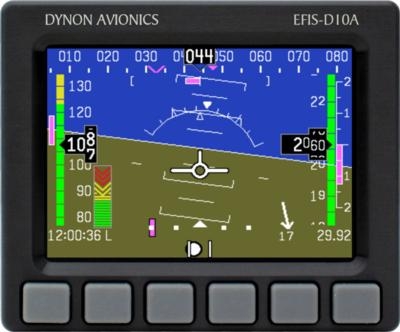Mon, Jan 16, 2017
EAA Announces More Type Certificated Aircraft Have Been Approved For Dynon STC
When Dynon and EAA announced that they had worked together to obtain an STC allowing the Dynon EFIS-D10A and EFIS-D100 displays to be installed in type certificated aircraft, it was a major step forward in bringing the technology and safety found in experimental homebuilt aircraft to the market for type certificated aircraft.

A long-anticipated expansion of the approved model list (AML) for EAA’s Accessible Safety STC to install the Dynon EFIS-D10A and EFIS-D100 flight displays has been granted by the FAA. The AML now includes the following type series:
- Beechcraft Bonanza/Debonair/
- Beechcraft Skipper
- Beechcraft Musketeer/Sundowner/Sierra
- Cessna 150/152
- Cessna 170/172/175
- Cessna 177/177RG
- Cessna 180/182/185
- Cessna 205/206/207/210
- Maule M-4/5/6/7
- Mooney M20
- Grumman AA-1/AA-5
- Piper PA-24/28/32/38
EAA STC, LLC. EAA’s subsidiary for STC development, will immediately begin taking orders for all listed types. The STCs sell for $100 to EAA members and allow for the installation of the Dynon unit as either a primary or backup attitude indicator in eligible aircraft. The display is connected to the aircraft’s pitot-static system and it will back up all primary flight instrumentation. A magnetometer, outside air temperature probe, and angle of attack probe are optional peripherals that expand the system’s functionality.
The STC’s instructions for continued airworthiness have also been updated to clarify that the Dynon unit may be used either as primary instrumentation or as a backup.
“We would like to thank our FAA oversight at the Chicago Aircraft Certification Office for working with us on our request to add more types to the approved model list,” said Sean Elliott, EAA vice president of advocacy and safety. “We have already begun developing the list for the next round of expansion.”
EAA is currently working on autopilot approvals and is actively pursuing approvals for TruTrak’s and Dynon’s autopilot systems. EAA is also advising an independent group working to certify the Trio Pro Pilot autopilot system in type-certificated aircraft.
“EAA will continue to push for an appropriate framework that manufacturers may use to certify all manner of low-cost, modern equipment that will enhance the safety and utility of the legacy fleet,” Elliott said. “We’re not done yet.”
(Image from file)
More News
He Attempted To Restart The Engine Three Times. On The Third Restart Attempt, He Noticed That Flames Were Coming Out From The Right Wing Near The Fuel Cap Analysis: The pilot repor>[...]
Make Sure You NEVER Miss A New Story From Aero-News Network Do you ever feel like you never see posts from a certain person or page on Facebook or Instagram? Here’s how you c>[...]
From 2009 (YouTube Edition): Leading Air Show Performers Give Their Best Advice for Newcomers On December 6th through December 9th, the Paris Las Vegas Hotel hosted over 1,500 air >[...]
Aero Linx: NASA ASRS ASRS captures confidential reports, analyzes the resulting aviation safety data, and disseminates vital information to the aviation community. The ASRS is an i>[...]
“For our inaugural Pylon Racing Seminar in Roswell, we were thrilled to certify 60 pilots across our six closed-course pylon race classes. Not only did this year’s PRS >[...]
 NTSB Final Report: Rutan Long-EZ
NTSB Final Report: Rutan Long-EZ ANN FAQ: Turn On Post Notifications
ANN FAQ: Turn On Post Notifications Classic Aero-TV: ICAS Perspectives - Advice for New Air Show Performers
Classic Aero-TV: ICAS Perspectives - Advice for New Air Show Performers ANN's Daily Aero-Linx (06.28.25)
ANN's Daily Aero-Linx (06.28.25) Aero-News: Quote of the Day (06.28.25)
Aero-News: Quote of the Day (06.28.25)



